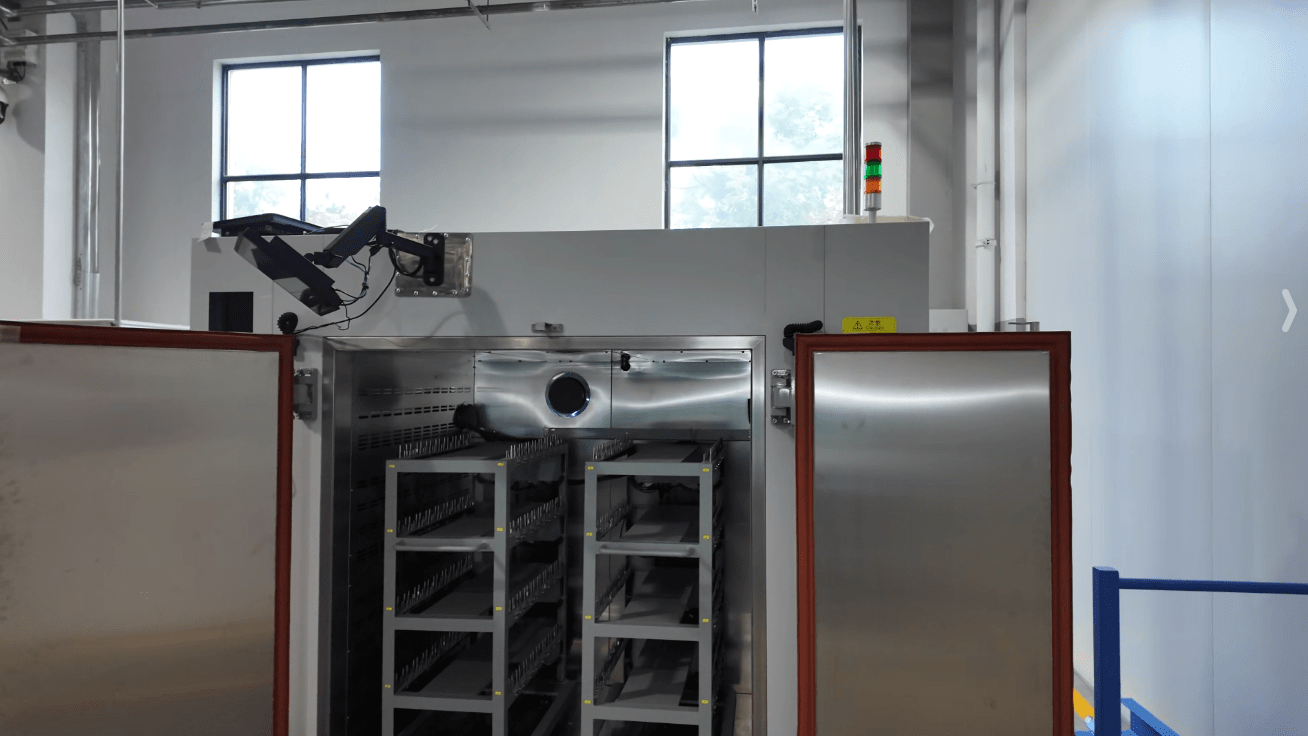Home » Blog » Load Cells » Temperature Compensation of Load Cell
Recently updated on July 30th, 2025 at 06:06 am
Temperature compensation refers to specific techniques and methods used to eliminate or correct measurement errors caused by changes in ambient temperature. Ideally, it eliminates all temperature-induced disturbances on sensor readings, ensuring measurement stability and accuracy.
In sensors such as ultrasonic sensors, temperature variations can significantly affect the speed of sound, leading to distance measurement errors. Likewise, in weighing load cells, temperature changes can cause material expansion, strain gauge drift, and signal fluctuations, making temperature compensation crucial for reliable performance
 (Temperature and Humidity Cycling Test Chamber for Temperature Compensation)
(Temperature and Humidity Cycling Test Chamber for Temperature Compensation)
The performance and accuracy of a load cell are influenced not only by its design and manufacturing quality but also by environmental factors—temperature being the most critical. Temperature changes may cause:
These drifts can accumulate over time and result in significant measurement errors, undermining long-term system reliability.
Different materials exhibit varying sensitivity to temperature. For example, aluminum has excellent thermal conductivity and is often used in high-temperature environments, but its modulus of elasticity is more sensitive to temperature changes. We use specially engineered strain gauges to reduce signal fluctuation caused by temperature variations. One common compensation method is adding thermistors to adjust the excitation voltage in the circuit. Though this may slightly lower the signal amplitude and slow thermal response, it significantly enhances measurement stability.
Moreover, temperature compensation helps flatten the zero drift curve, improving long-term zero-point stability and accuracy. In extreme conditions such as outdoor weighing, food processing, or marine applications, reliable compensation ensures load cells maintain performance regardless of environmental fluctuations.

Load cells are core components of industrial scales and automation systems. Their output is highly dependent on mechanical structure and electronic signal integrity. Temperature changes affect performance in two key ways:
In our high-precision load cells, a 10°C rise in ambient temperature—without compensation—could result in output drift up to ±0.05% of full scale. This is unacceptable in high-accuracy or legal-for-trade applications. Effective compensation techniques must be employed to guarantee stable performance across a wide temperature range.
Temperature compensation ensures that load cells maintain accurate, consistent outputs within their operating temperature range. For example, a non-compensated load cell might read 102 kg at 60°C instead of the correct 100 kg, while a compensated sensor maintains the correct output across the full range.
Compensation methods include:
Hardware compensation provides fast response but adds cost. Software compensation is flexible and cost-effective but relies on precise calibration data.

Modern high-end weighing systems, such as multi-axis platforms or unattended weighbridges, increasingly rely on active compensation to meet demanding performance standards.

When selecting a compensation strategy, consider the following:
Our load cells employ multiple temperature compensation techniques:
The material selection in load cells is critical for effective temperature compensation and overall stability.
Temperature compensation is an essential component of load cell design and application. It corrects measurement errors caused by environmental temperature changes and ensures stable, reliable sensor output. As industrial systems face increasingly complex and demanding environments, advanced temperature compensation technologies become vital for maintaining competitive performance and exceptional accuracy.
By choosing load cells with comprehensive temperature compensation capabilities and implementing the right compensation strategy, you can ensure your weighing system performs optimally under all conditions.
